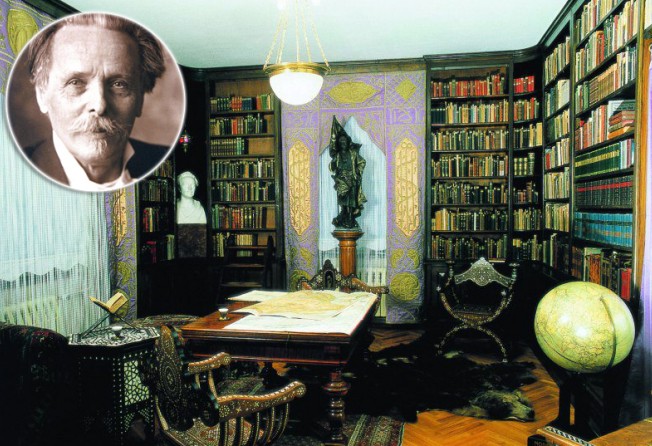Karl May museum under fire over display of native American scalps

A museum dedicated to the adventure novelist Karl May has been accused of disrespecting the wishes of the American native tribes that once inspired his stories by refusing to hand over a collection of scalps.
Since its foundation in 1928, the Karl May Museum in Radebeul, near Dresden, has held 17 human scalps bequeathed to the private collection by a friend of the novelist. Three are on display.
For four years, United States activists have been calling for the return of the scalps. The display of scalps has been banned in the US since 1990.
Yet in spite of an official letter from an umbrella group representing North American tribes requesting the return of the artefacts having been handed to the Karl May Museum last month, the museum has made no moves to return the items.
Contrary to popular belief, scalping was not practised solely by native Americans, but was also widespread among European colonists, One of the authors who helped to popularise the conception of scalping as a native American tradition was Karl May himself.
The author of the best-selling Winnetou novels didn't visit America until after his literary success, but frequently projected the idea that his books were autobiographical.
The majority of scalps in the Radebeul collection were handed to the museum by a friend and admirer of Karl May's, a circus artist named Ernst Tobis, who went under the stage name "Patty Frank".
According to his biographer, Tobis purchased his first scalp, originally belonging to a chief of the Ojibwa tribe, in return for two bottles of whisky, a bottle of apricot brandy and US$1,100, during a trip to a native American reservation in 1904.
A spokesman for the descendants of the Ojibwa tribe said displaying the scalps in a museum was "inappropriate and unacceptable".
Hans Grunert, exhibition curator at the museum, said the exhibits were "part of history", and that "it is important to the museum that history isn't being falsified in our exhibition".